How to set up a bearded dragon tank?
When thinking about a way to set up a bearded dragon tank, you should remember that this kind of lizard originally comes from the deserts of Australia.
Therefore, it is really important for you to provide your bearded dragon with plenty of light, warmth, and low humidity.
That is the reason why all enclosures must have UVB, UVA, and basking lights, and a ceramic heat emitter should be also highly recommended for keeping the tank warm at night.
Especially, to measure the temperature in the tank, a thermometer is necessary.
There are several different types of optimal cages or enclosures that will range in price levels, functions, and materials.
However, regardless of the type of enclosure, you should make sure that the tank must have a screen lid, which will allow for proper airflow and keep humidity levels down.
Also, the lid will help prevent your beardie from escaping.
Specifically, glass, plastic, or any other type of solid tank lids should be avoided as they can restrict airflow and cause the humidity within your pet’s tank to increase to unhealthy levels.
By contrast, a screen lid is suggested to cover the tank, and good screen covers are strong enough to support the weight of your lights and can easily withstand the heat from any heat lamps.
Let us discuss how to set up a bearded dragon tank in more detail below.
Related Posts:
- Why Is My Bearded Dragon Hissing at Me?
- Can Bearded Dragons Get High?
- Reasons Why Your Bearded Dragon Turned White and Died
- How to Choose a Bearded Dragon?
What Tank Size Is Best to Set Up for a Bearded Dragon?
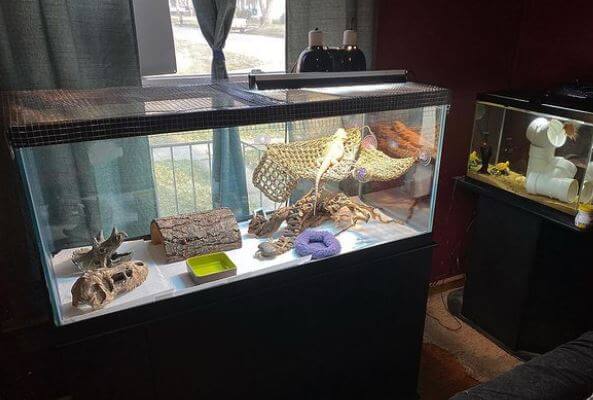
What tank size is best to set up for a bearded dragon?
As you may know, bearded dragons are land dwellers, and they really love exploring, so a tank that can offer ample floor space plays an important role in your pet’s overall growth.
By contrast, a too-small tank can cause your beardie to be stressed.
Therefore, you need to make sure you have the right tank size for your bearded dragon.
Depending on the age of your dragon, you will choose the one which is suitable for your pet. Below are some recommendations for categories of tank size:
- Baby bearded dragons – A 20-gallon tank is highly recommended as it allows them gives them to catch their food easily.
- 10-16-inch bearded dragons – Early adult dragons need at least a 40-gallon tank.
- 16-20-inch bearded dragons – It’s recommended to have at least a tank that is at least 50-75 gallons.
- Over-20-inch bearded dragons – The tank should be at least 75 gallons, but a 120 gallons tank would be ideal.
What Are the Different Types of Tank Setups for Bearded Dragons?
Read on to discover the different types of enclosures you can use for your bearded dragon.
1. Glass Enclosures
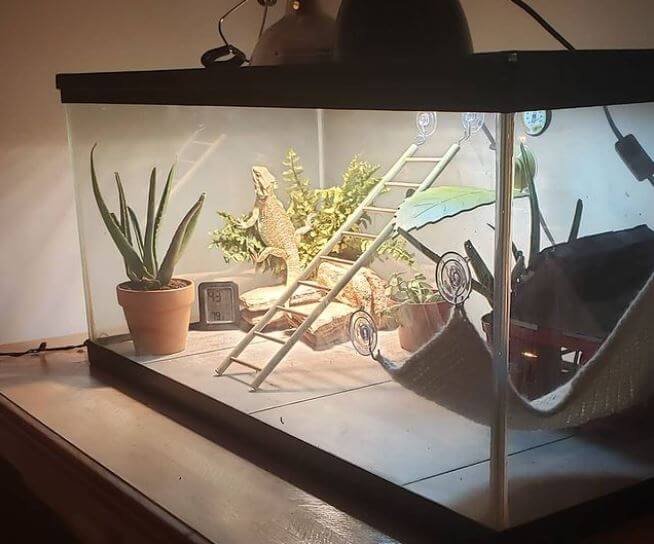
Glass terrariums are probably the most popular type of enclosure for bearded dragons as they are very durable, pretty affordable, easy to find at any local pet store, and can sometimes even be found for free.
Another reason why they are loved by most pet owners is that they allow you to clearly see your pet and monitor the cleanliness of the cage.
Also, the screen lid that goes on top plays an important role in allowing for ample airflow, which helps keep humidity levels low and makes this type of enclosure a good habitat for your pet.
However, there are some drawbacks when using a glass terrarium.
Firstly, it will be too heavy for you to move when it is set up.
Especially, it doesn’t hold heat as well as other habitat options, which can result in your dragon being a little dull in color.
Therefore, if you have a colorful pet, you may not want to choose this type due to its lack of insulation.
2. Plastic Enclosures
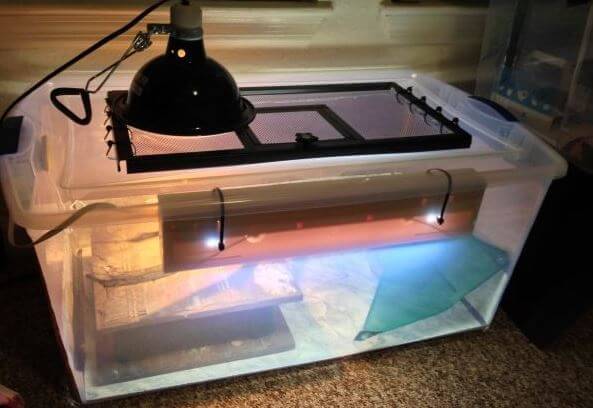
a. PVC Tank
PVC cages are made of PVC plastic, so they are moderately light compared to melamine cages, which are made of wood, and you can easily move them.
Also, they have a smooth and attractive look but they are quite expensive depending on the size.
Furthermore, PVC cages vary in colors, so you can choose one that fits your aesthetic style.
You can even ask the seller to install the lights for an additional charge.
Most importantly, these cages are typically good at holding heat, which is more likely to suit your dragon well.
However, as this kind of cage has an enclosed top that doesn’t allow for proper airflow, these cages may have difficulties keeping humidity low.
b. Vision Cages
Vision cages are said to be one of the most professional options as they are made from one molded piece of plastic.
Also, they are chemical resistant and easy for you to clean and have heat lamp shrouds built indirectly.
Furthermore, they are loved for their lightweight, and you can easily stack them on top of each other to save space.
However, although vision cages may be a great choice for beardie owners, they can be quite expensive.
c. ABS Cages
Like both vision and PVC cages, ABS cages, which are made of ABS plastic, are light, which makes them easy to move, stack, and clean.
Also, ABS plastic is known not to emit the toxic odor that other plastics can emit. However, they can be quite expensive.
3. Wood Enclosures
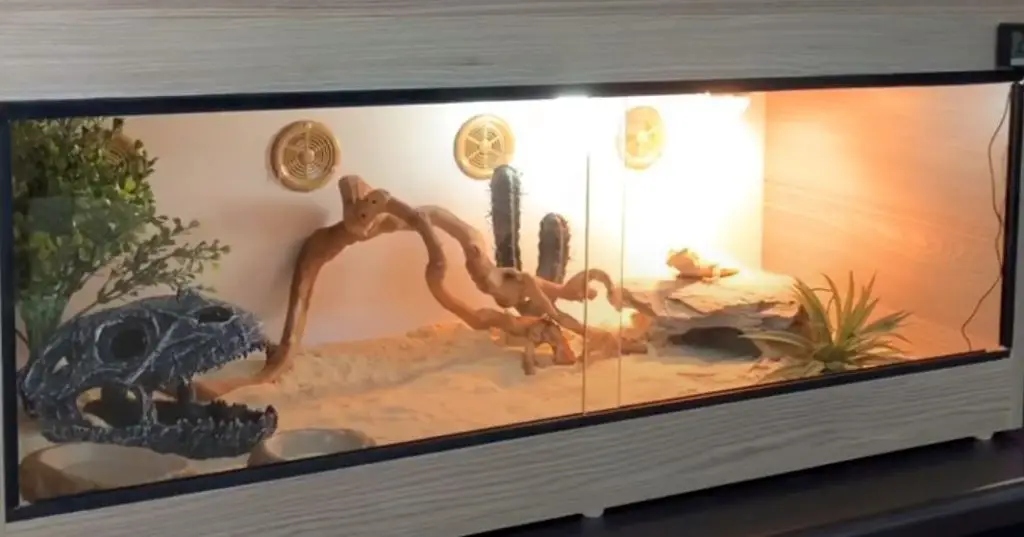
a. Melamine Tank
Melamine cages are made of melamine, which is a very heavy and sturdy wood and is highly recommended for being a great insulator.
Therefore, it would be a great choice for you to buy it or build a cage for your beloved pet.
Not only does this kind of material do a fantastic job of keeping your beardie nice and warm but it also reflects more light, which makes your dragon look happier and amazing.
However, the drawback of this material is that it is expensive, heavy, and can be ruined if gotten wet.
b. Plywood Tank
If you want to make a cage for your beloved dragon by yourself, plywood is a great option for this project because it is easy to find, cheap, and very lightweight.
Also, you had better seal the plywood with a non-toxic sealant and leave the top open for a screen lid.
How to Set Up a Bearded Dragon Tank?
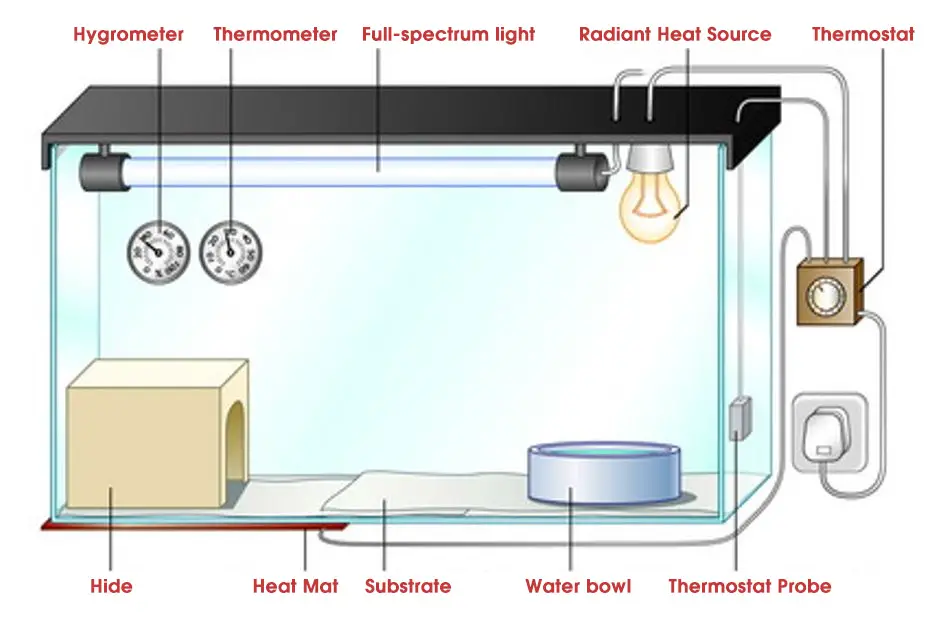
Now, how to set up a bearded dragon tank?
Creating a proper living environment for reptiles is not easy at all as you have to pay much attention to many essential factors, including heat, temperature, humidity, and so on.
Therefore, you should be knowledgeable about the devices that will help you to control these factors.
How to set up a bearded dragon tank?
1. Reptile Hygrometer
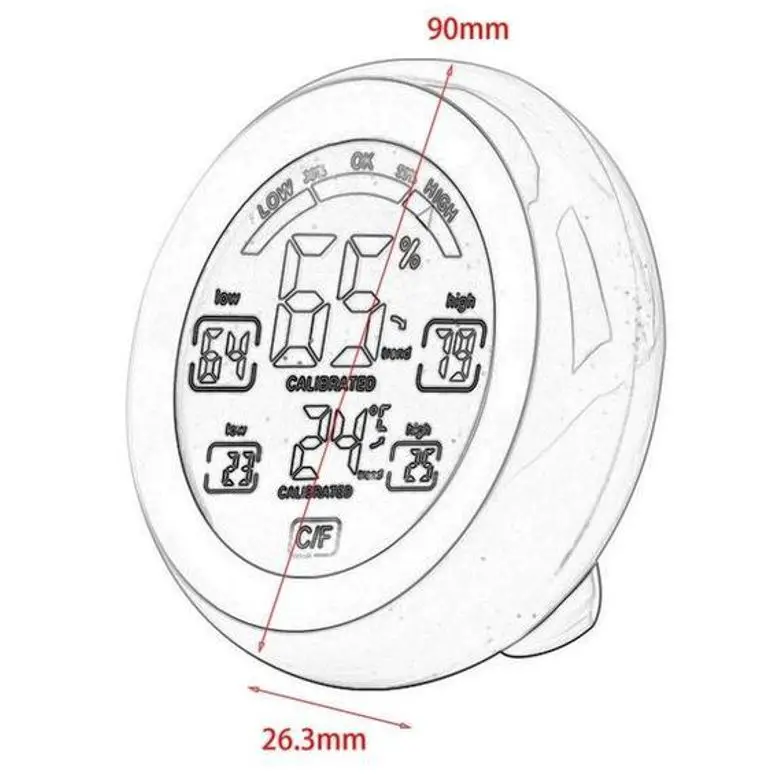
The first criterion that you should consider to maintain a healthy and happy reptile is humidity.
This is because a high humidity level can cause your pet skin infections and respiratory problems while the humidity that is too low may cause dehydration or be fatal to your pet.
Therefore, in order to imitate your pet’s natural home and maintain its well-being, you should have the best hygrometer to adjust and observe the presence of water vapor inside your tank.
2. Thermometer, Thermostat, or Heat Lamp
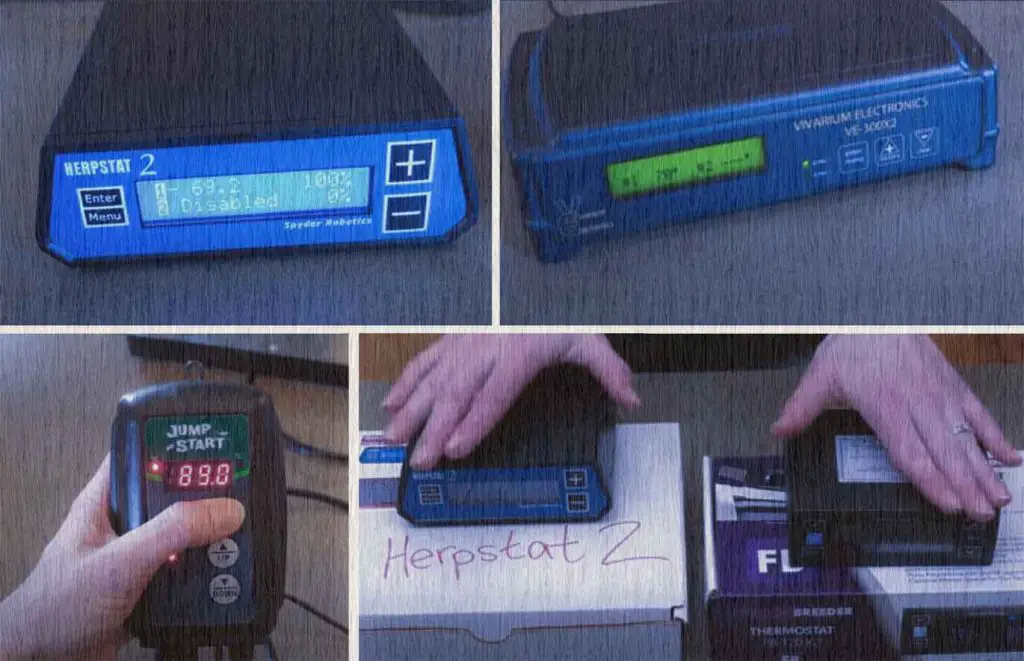
Regarding temperature, it is very important for you to provide your pet with a source of heat in their habitat as they are cold-blooded animals and could not regulate their inner temperature.
Therefore, you are highly recommended to use a thermostat so that you can control the temperature to make sure it is going well all the time.
It can turn on the heat when the temperature goes down and turn it off when the set temperature reached the expectation.
It is also important to have a heat lamp if you are to set up a bearded dragon tank.
In case the atmosphere inside the tank gets too hot or too cold, this will result in diseases or even death among reptiles, cold-blooded creatures.
Therefore, it is a must to provide them with adequate heat so that they can remain healthy and content through all days and nights.
Last but not least, if you want to keep the temperature unchanged at the most comfortable level for your little pet, don’t hesitate to have a thermometer, which can lead to a considerable difference in the bearded dragon tank setup.
These tools are spent on not only bearded dragon tank setup but also other reptiles.
Read More:
3. UV Meter
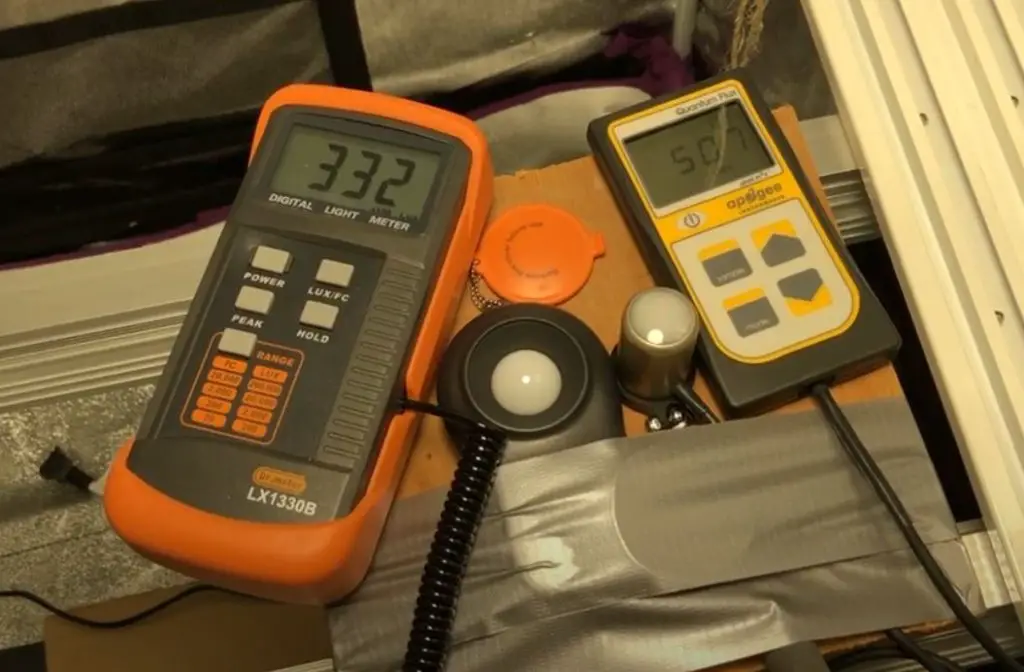
As you know, ultraviolet radiation is essential for our health as well as reptiles’ health as it takes to care for calcium synthesis and several essential behaviors.
However, there will be some problems if your pet gets exposed to too much ultraviolet radiation as this can lead to some bad impacts.
To take control of the amount of ultraviolet radiation exposure, you must have a UV meter in your house, especially if you keep reptiles as pets at home.
Specifically, a good UV meter can allow you to follow up and control the exposure to ultraviolet radiation to keep your pet healthy
4. Reptile Light Timer
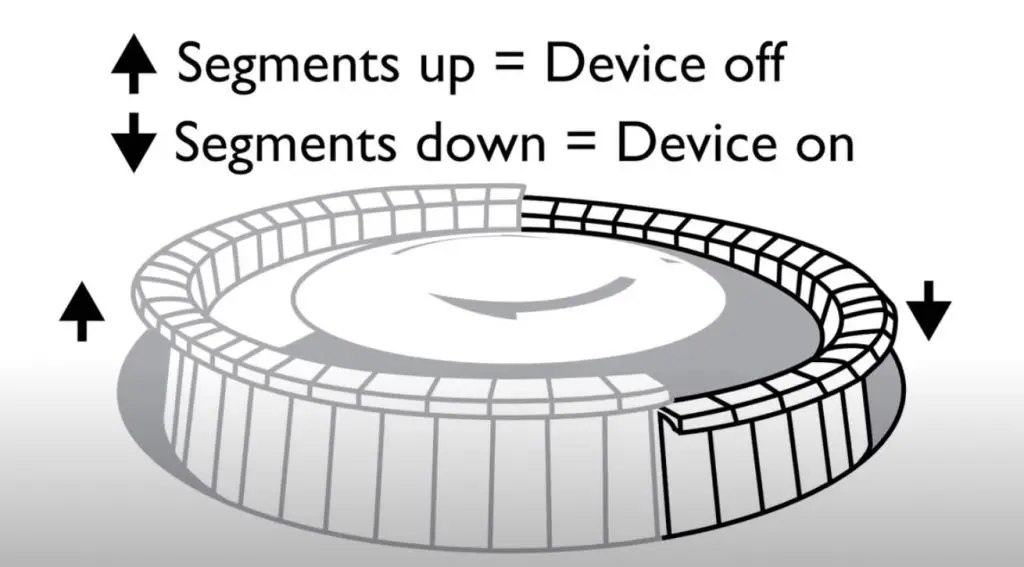
Another device that also plays an important role in your reptile tank setup is a reptile light timer.
As you know, the day and night cycles repeated correctly have a great impact on reptiles’ schedule and behavior as they need light to wake up and darkness to sleep.
Therefore, a system of a turn on/off the bulb at an exact time would be a priority.
5. Reptile UVB Bulbs
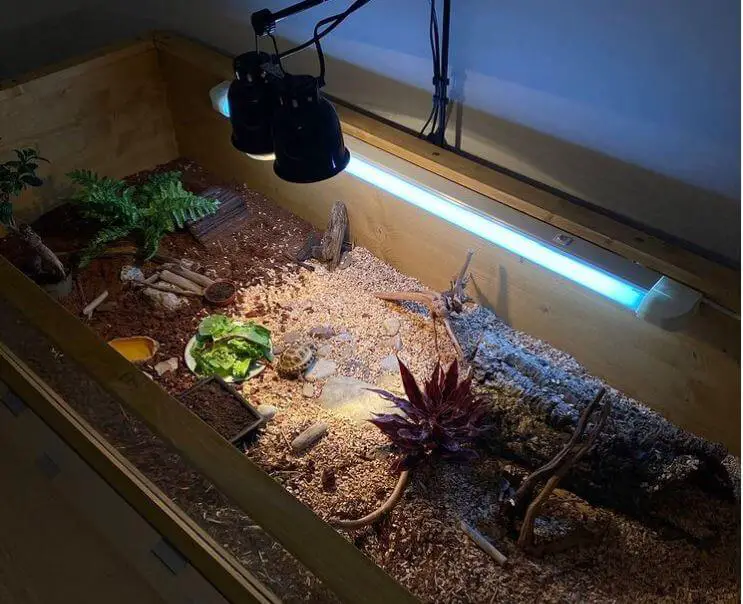
As a reptile lover, it will be a big mistake if you miss reptile UVB bulbs for the tank.
Your pet needs ultraviolet B to synthesize Vitamin D3 to absorb and metabolize calcium.
A lack of ultraviolet B or lack could lead to many health issues such as soft bones, metabolic disease, and deformation.
Read More:
6. Humidifier
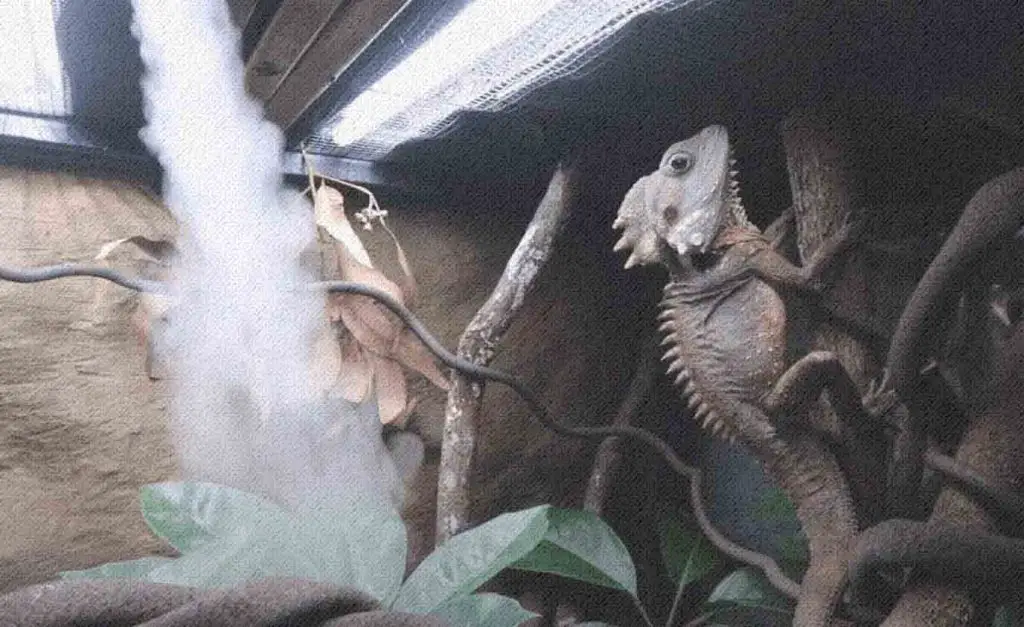
As reptiles could not keep the moisture as other animals, you will need a humidifier to keep them comfortable and healthy.
This device will help to purify the air, which can provide safety, health benefits, and also comfort for your animals, especially shedding, hydration, and normal behaviors.
If your pet is diagnosed with an allergy, this device can properly humidify the air to reduce the symptoms.
7. Heating Pad
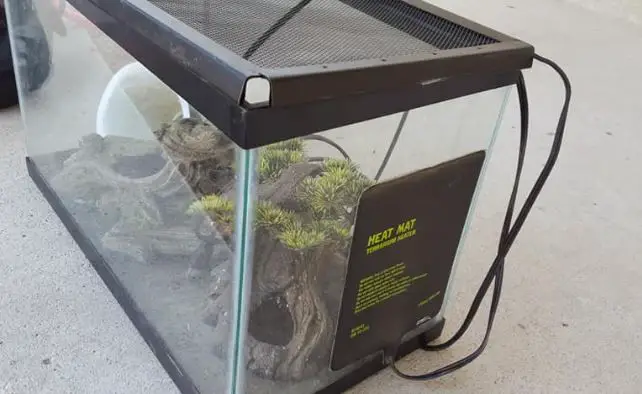
A heating pad is a must-have device for reptiles as they cannot maintain their heat inside.
Apart from the main heat sources such as lamps, you need to have a secondary source including pads as they will play the role to mimic the natural habitat by warming up the rocks as well as increasing the general temp of the tank for making sure your pet’s amount of heat requirements.
This will allow your animals to stay active and healthy. It is a needed tool if you want to set up a bearded dragon tank yourself.
8. Automatic Reptile Feeder
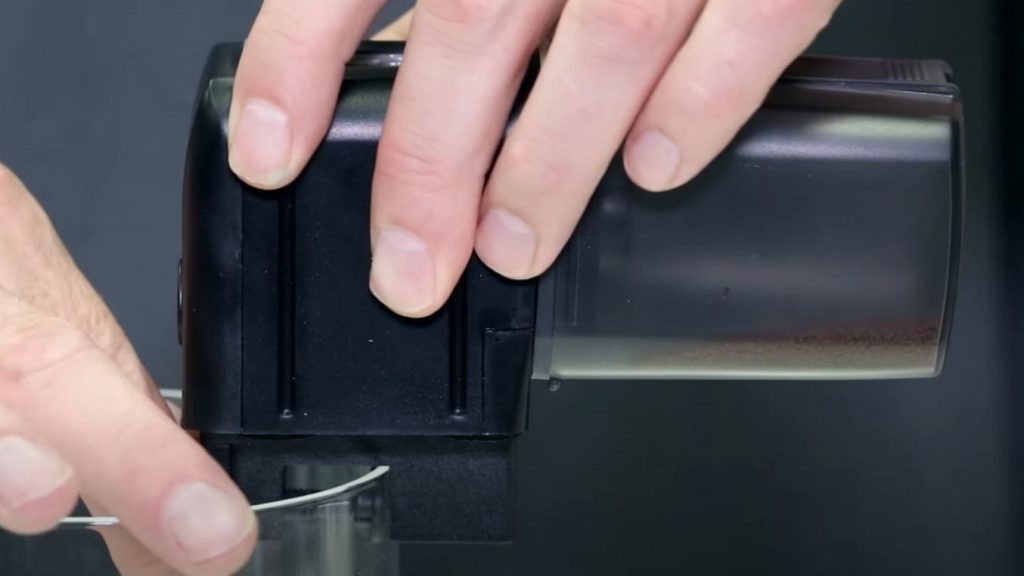
Another useful device that you should pay attention to is an automatic reptile feeder as this best-suited option will help your pet get optimum care when you are gone.
You will find it so useful as this device has the ability to automatically track food and water levels as needed so that your tiny friend will be given nutritious food to live safely and keep well at all times.
9. Reptile Misting Systems
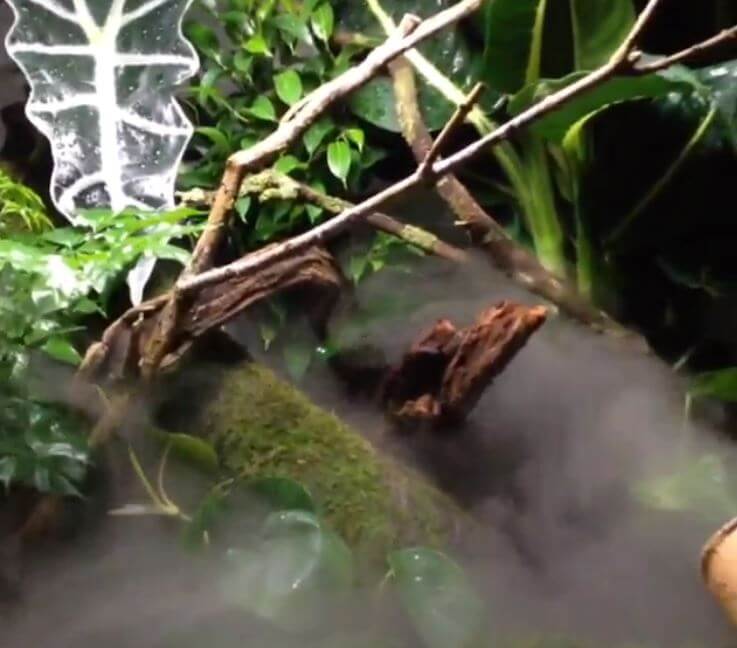
It would be challenging for you to keep your pet hydrated as reptiles have dry skin, which doesn’t hold water well.
However, giving your pet water to drink and dip in to keep hydrated isn’t enough.
Therefore, you had better use the best reptile misting systems to make sure the humidity of the enclosure is at optimum levels, which can be good for their eyes, skin, respiration, and skin shedding.
There will be many serious problems if you don’t give your pet great care and good hygiene.
Therefore, to maintain its comfort and good health, it is essential for you to practice good cleaning habits daily and weekly.
This could help reduce the growth of harmful microorganisms and make the tank odor-free.
Otherwise, your pet will be susceptible to diseases and bacterial infections, which can also affect your health.
Luckily, there is the best cleaner on the market that you can consider for reptile cages to prevent them from being sick and protects you and your household, too.
So you have decided to become a reptile breeder. Good for you.
10. Incubator
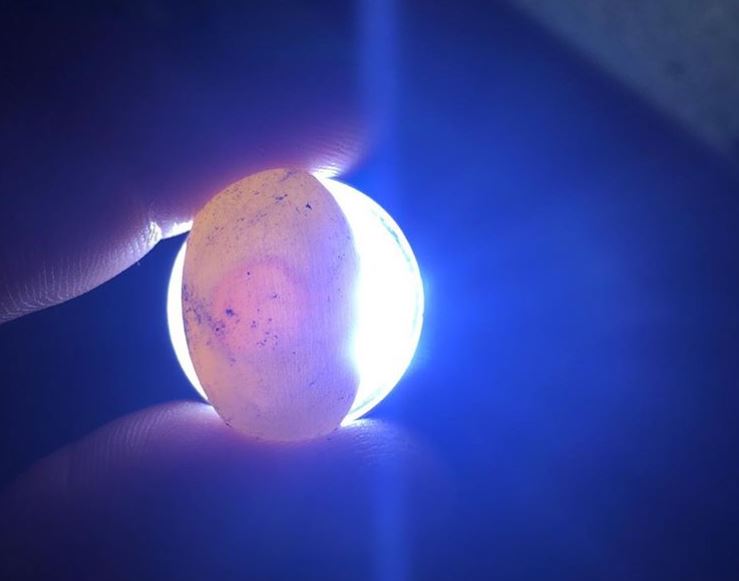
What you need now is a system that makes sure the eggs you collect hatch into healthy baby pets.
An insulated box that contains a humid substrate and heating pads could suffice as an incubator, but you would still need a means of controlling temperature and humidity.
Electronic incubators are better as they allow you to control these elements more easily but there are a lot of them available in the market, so which is the best reptile incubator for you?
With good temperature and humidity manipulation, you can even determine the sex of the baby reptile, so you now see why it’s important to choose the best equipment as you breed.
In this article, the best reptile incubators would be reviewed to help you in making the best choice at all times, and you would also be taught what factors to look out for when purchasing the equipment.
Here are the best incubators for bearded dragon eggs!
What Accessories Can You Put in a Bearded Dragon Tank?
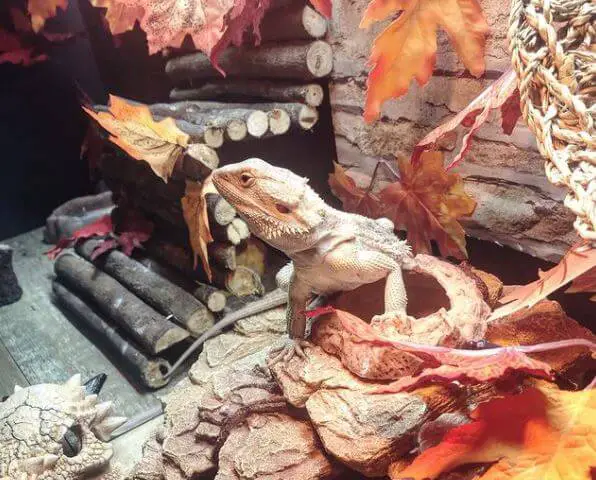
1. Substrate
Choosing the best substrate or bedding for your beardies plays an important role in providing them with comfortable and good accommodation as this will have direct positive influences on the health and enrichment of your lizards.
They could help prevent impaction, disease, and other things that can harm your pet.
However, choosing the proper type of flooring for your pet is not easy at all as chances are that some beardies may eat a bit of it, which can easily lead to impaction.
There are two types of flooring: loose particle and non-particle substrate, and the latter is commonly recommended.
Now, we will give you a clearer look at the differences between loose particle and non-particle substrates, as well as some examples of each one.
a. Loose Particle-Based Substrate
Loose particle-based substrates can produce debris and dust that your beardie can consume, which may lead to the risk of impaction.
In this case, your dragon’s digestive tract becomes clogged, which doesn’t allow him to pass a bowel movement.
As a result, your pet may be in danger of death if not taken care of!
Another threat that your pet can face is that these substrates can get into his eyes and nose, leading to infection!
Here are some examples of popular loose particle substrates:
- Play sand
- Wood chips/shavings (this one is toxic to bearded dragons, so you had better avoid it)
- Gravel
- Walnut shells (avoid at all costs)
- Calcium sand (the brand Calci-Sand is not digestible)
- Alfalfa pellets
- Millet
None of them are highly recommended.
However, if you want to create a more natural-looking enclosure by using sand, don’t forget to wait until your pet has reached his full size as this will help reduce the chance of impaction.
Read More:
- Top 7 Best Calcium Powders for Beardies
- Best Substrate for Russian Tortoise
- Best Substrate for Leopard Tortoise
b. Non-particle Substrate
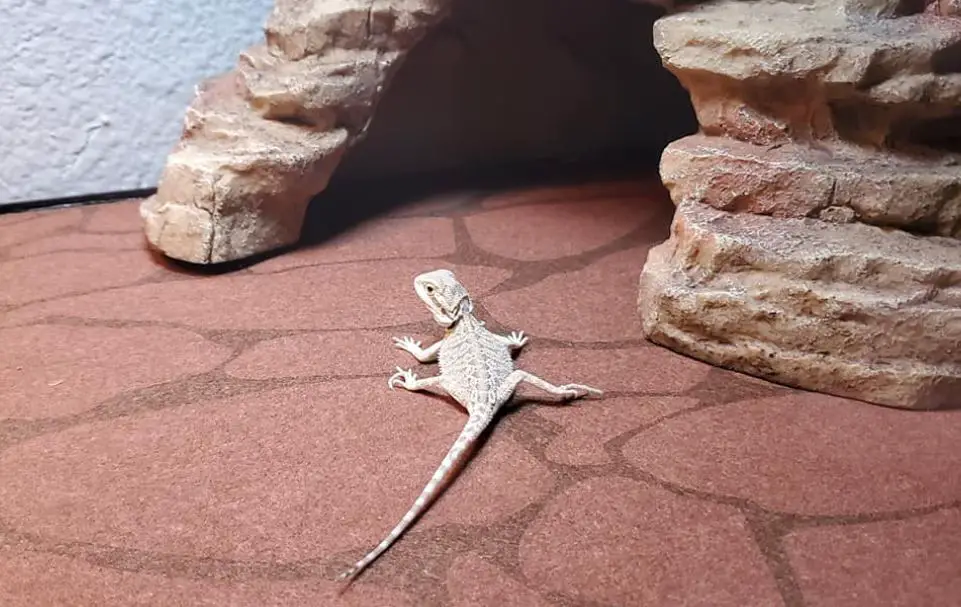
Non-particle substrates are highly recommended as they are not likely to cause your pet to become impacted.
Also, they will not get stirred up easily and end up irritating your beardie’s nose or eyes.
Below are some common types of non-particle substrates that you can check out:
- Newspaper
- Reptile carpet
- Paper towels
- Non-adhesive linoleum
- Ceramic tile
Among them, the reptile carpet and newspaper are the most commonly used.
However, this kind of substrate also has some potential drawbacks.
Firstly, your dragon’s claws may get stuck in the threads of the reptile carpet. Second, some dragons do not like the slipperiness of the flooring, particularly tiles.
Therefore, you had better give your pet accessories that he can climb on, and keep his nails trimmed.
Also, you should consider laying down some non-toxic adhesive and topsoil or sand to the tile.
Read More:
2. Plants
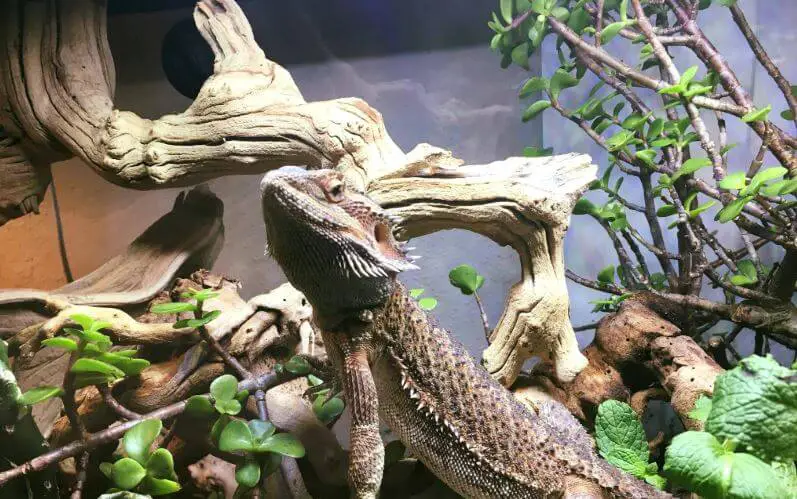
To spruce up your bearded dragon’s living environment, you definitely should consider some safe plants.
Additionally, this will have a great influence on the lifespan of your beardie.
Maybe you will wonder which one to choose between live plants and fake ones.
Therefore, we would like to give you further information about two types of plants: live plants and artificial plants.
Regarding live plants, they are always a great choice but the question here is whether they are safe or not when your pet ingests them.
Another thing you should consider is whether these trees are able to deal with hot and dry conditions in cages.
Therefore, we suggest you choose plants living in harsh desert environments and not requiring a lot of water.
Furthermore, chances are that your dragon will probably climb or destroy the trees, which affects the survival of these trees in the beardie habitat.
In this case, you should choose plants that are strong and have large stems or you can diminish the damage with the help of gravel and rocks.
There are a few non-toxic plants that are both safe and attractive additions to the terrarium that you can consider such as aloe vera, jade plant, echeveria, red rooster ornamental grass, sky plant, turtle vine, herbs, and so on.
However, you can consider plastic ones if you want to avoid the risk that your pets will face digestive problems with real plants.
Especially, artificial plants are also maintenance-free, cheap, easy to clean, and last longer than real trees.
However, there are some potential harms of fake plants for bearded dragon habitat.
Firstly, the plastic smell from these trees can make your pet uncomfortable.
Secondly, in case the beardie might ingest some pieces, they will suffer from bad digestive problems.
Read More:
- Plants for Turtle Aquarium
- Can Bearded Dragons Eat Dill?
- Can Bearded Dragons Eat Peas?
- Do Bearded Dragons Eat Squash?
3. Hides
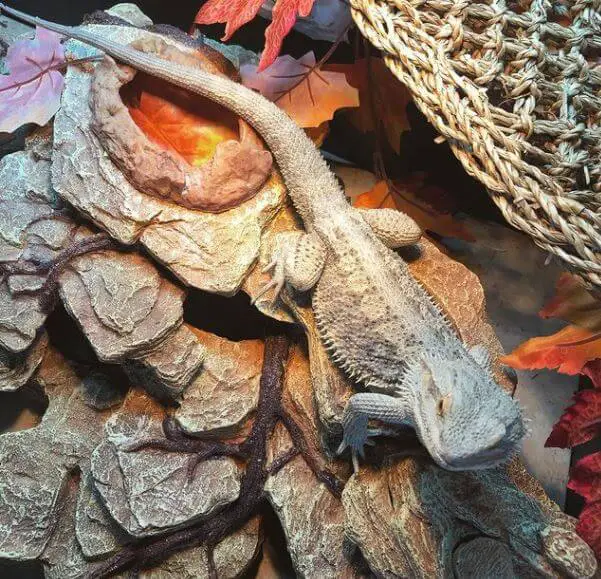
It’s very important that you have a safe place called a “hide” for your bearded dragon to rest if he wants to feel extra safe and secure or hide from the light and people.
These hides are also crucial for bearded dragon brumation when your beardie will sleep heavily for weeks in fall or winter.
Also, placing his/her hide beneath the basking light will not only warm their hide but can also cause their hide to be a basking platform as well.
When choosing a hide box, just make sure the box is large enough that your beardie can completely fit inside as he won’t feel very safe with his tail sticking out!
In case your tank is large enough, including more than one hide box may give your pet more choices and the feeling of a more expansive territory.
You also need to put hides in a cooler area away from the basking bulb in case your pet becomes a little toasty while basking and needs to cool down.
Also, keeping the boxes away from the water dish helps prevent humidity buildup.
4. Hammock
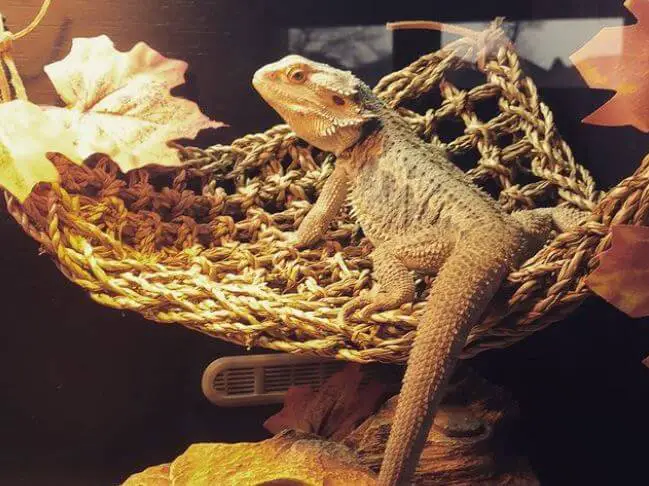
Adding a special hammock to your bearded dragon’s habitat will allow you to realize how much your pet loves lounging on this piece of furniture.
You can make a hammock by yourself or find ones that will hang nicely in your beardies’ habitat at most pet stores or online.
Also, we recommend you buy hammocks with suction cups and hooks at the ends so you can easily stick them to your tank.
Especially, make sure the hammock fabric won’t catch on their nails and place it low enough so they can climb on easily.
As most lizards love climbing, you should have at least one branch that your pet can climb on, which will make this activity more funny and challenging.
However, you should make sure that the branch is not placed too high to stop your beloved pet from a dangerous fall.
Also, if you prefer a real branch, it shouldn’t have small holes that insects may hide in.
5. Background
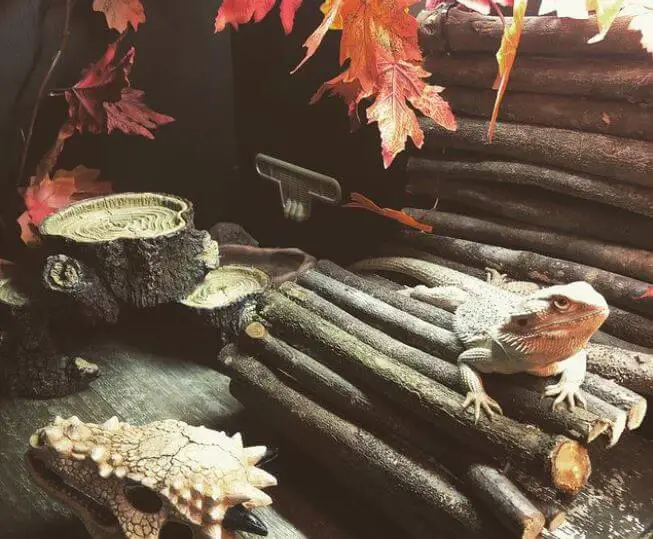
If your bearded dragon lives in a glass terrarium, you had better get a background for the back of the tank, which helps not only mimic the look of his natural environment and minimize glass surfing but also makes your bearded dragon feel more secure.
A wide range of materials that you can choose for the background are wood, shrubbery, and so on but just make sure that they are safe for your pet.
6. Water and Food Bowls
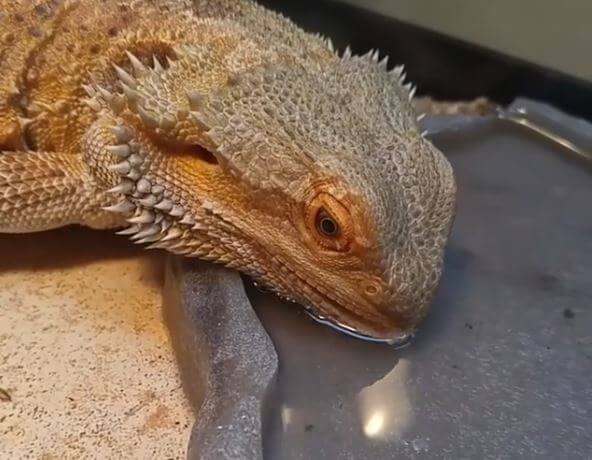
You can find it easy to feed your pet a balanced diet when adding a food bowl to his habitat.
However, make sure the bowl is shallow enough to look into and reach the food inside.
Regarding the water bowl, as bearded dragons are desert dwellers, you don’t need to have a water dish in their cage every day.
This is also because they can get a large amount of water through their diet, especially dark leafy greens and fruit.
However, you should make sure that the dish is shallow, and the water should be kept clean. Additionally, don’t forget to clean the bowl after every use.
One useful tip is that using a water conditioner will help remove chlorine and other unwanted chemicals from your water source to ensure your dragon stays healthy.
Also, spraying them down in moderation with some water in a spray bottle or adding a tiny bit of strawberry or other fruit juice to the water to enhance the taste will help to encourage your beardie to drink more water.
Last but not least, be sure to keep both food and water bowls away from basking lamps to prevent food spoilage and excessive warming of the water.
When it comes to setting up a bearded dragon tank, the placement of each item matters just as much as what you include!
Read More:
7. Basking Platform
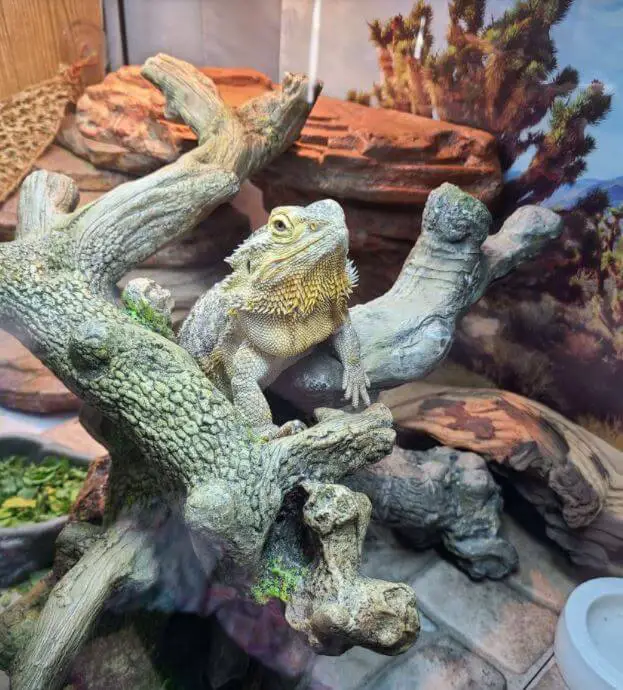
It is essential for you to have a basking perch in your beardie’s living environment so that he can choose the perfect heat intensity, as well as catch UV light.
Therefore, if your tank is large enough, don’t hesitate to provide the tank with a basking platform such as grapevines, natural driftwood, and rocks.
Make sure that you want to trim your pet’s nails due to the rough surface of some kind of platform.
How to Set Up Temperature for the Bearded Dragon Tank?
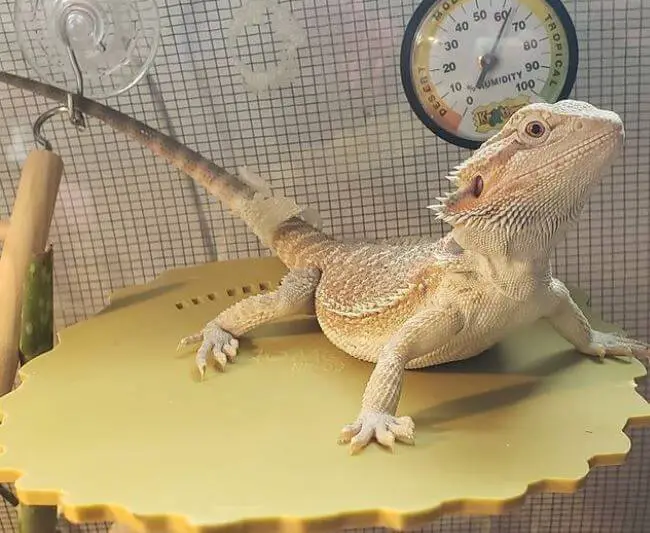
The ideal temperature of your bearded dragon’s tank should be divided into the hot side and the cool side.
While the hot side is between 95 and 110 degrees, the cool side is between 75 and 80 degrees during the day, and definitely no warmer than 85.
Therefore, you are recommended to have two thermometers: one for the hot side and one for the other.
Adults’ and juveniles’ needs for basking temperatures will vary slightly.
Specifically, the basking spot should be 95°F for adults and 110°F for juveniles.
However, a heated rock shouldn’t be used for your dragon because it can easily burn the underside of your pet.
At night, the temperature can fall to 65 degrees so you need to consider a secondary heat source, particularly a ceramic heater
How to Set Up Heating and Lighting in a Bearded Dragon Tank?
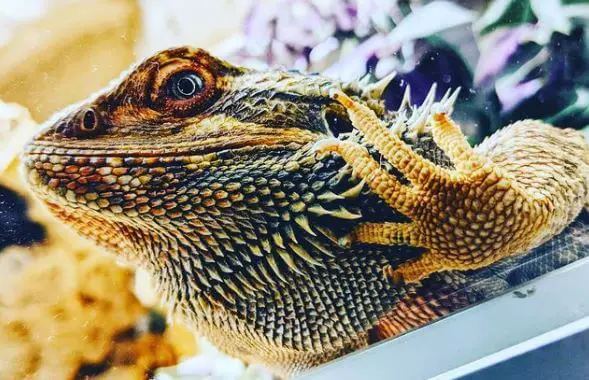
An essential part of a bearded dragon’s habitat setup that you should pay much attention to is proper lighting and heating so that your beardie, a cold-blooded animal, could require adequate heat to be healthy.
As I have mentioned before, a basking platform is necessary for your lizard to have a safe place to bask under a basking bulb that supplies the appropriate radiant heat.
Also, you should set up full-spectrum lights to provide the proper UVA and UVB light so that your pet can properly synthesize calcium and thrive.
However, you should consider your take size for choosing the correct heating and lighting bulbs, and make sure that bulbs are designed for each type of reptile.
Also, the effectiveness of these lighting and heating bulbs will be reduced when you place glass between the bulbs and your lizard.
To keep your pet tank’s temperatures within the proper range, you can buy a ceramic heat emitter instead of under-tank heaters as these heaters can run the risk of shorting out and burning your beardie.
In addition, 2 separate thermometers on both sides of the tank can be helpful for you to take control of the temperatures during the day and night
What Humidity Level Is Good for Bearded Dragons?
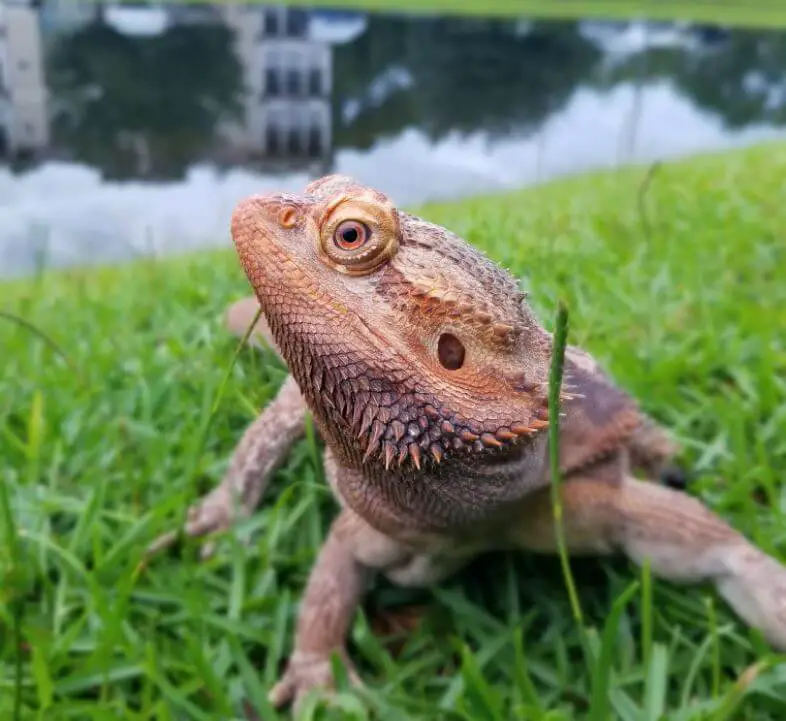
As a desert dweller, a bearded dragon just needs a low percentage of relative humidity.
Relative humidity levels for a bearded dragon are between 35 to 40 percent.
Too high or too low humidity levels can result in health issues for your pet, including shedding problems, respiratory infections, and similar diseases.
There are some tips you should pay much attention to if you want to set up a bearded dragon tank.
Firstly, you are not recommended to use full glass or plastic covers on the enclosure for a beardie as these covers will keep humidity within the terrarium.
Furthermore, when providing your lizard with a water dish, just make sure the dish is shallow.
Especially, you should place a water dish in the tank for a couple of hours every single day as consistent water sources are more likely to contribute to upper respiratory infections in dragons due to an increase in the humidity in the enclosure
Last but not least, a bioactive substrate is highly recommended as it can control moisture and air.
To determine the humidity of the bearded dragon tank, it is necessary for you to install two hygrometers (either analog or digital).
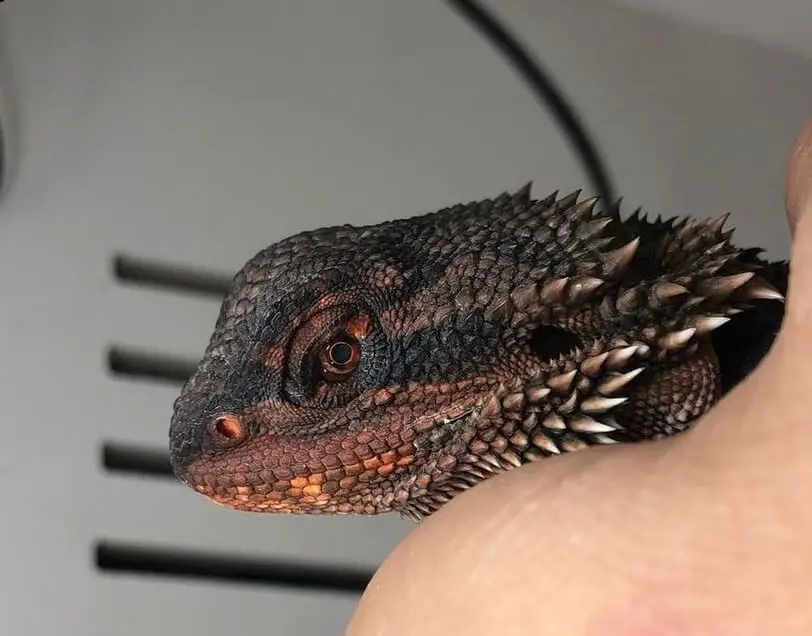
There are some other ways that you can try to take control of the humidity level in your bearded dragon tank.
- Increase in ventilation.
- Move any live plants to another room to reduce transpiration.
- Place one or more socks of rice in the enclosure.
- If the humidity is at extreme levels, it is presumably exasperated by climate. Use a dehumidifier in the room.
- The principle of reducing humidity levels for bearded dragons is to lose moisture in the air. In other words, it is air drying.
- We use an air conditioner in our room, which makes the air drier. On the contrary, we use a nebulizer to raise the humidity.
What Is the Advantage of Using a Starter Kit to Set Up a Bearded Dragon Tank?
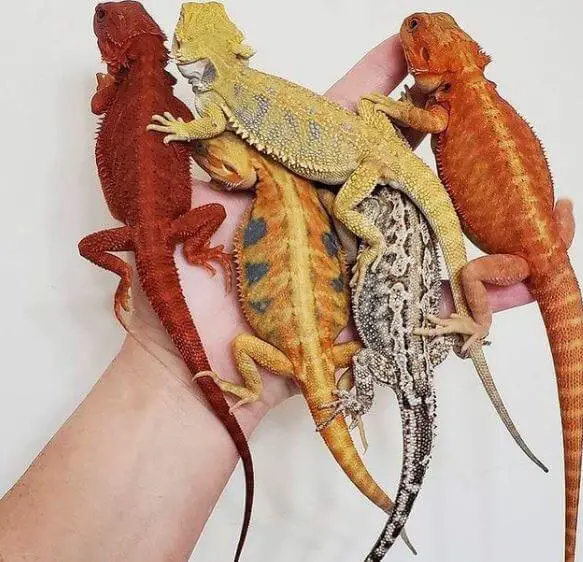
When it comes to bearded dragon tank setup, there are many factors that you have to consider such as lighting, temperatures, accessories, or humidity.
If you are a beardie beginner, you may find it hard and time-consuming to set up a bearded dragon tank
However, everything will become much easier if you consider the best bearded dragon starter kits.
There is a wide range of brands on the market. Just spend an acceptable amount of money, and you will have every basic thing without worrying about choosing the wrong heater or lights.
Read More:
Conclusion
After reading this article, we hope that you have enough information to set up a bearded dragon tank.
Raising a bearded dragon is quite challenging, but we are so happy to see your beloved friend stay strong and healthy.
Key points for how to set up a bearded dragon tank:
Setting up a suitable habitat for your bearded dragon is essential for their health and well-being. Here are the key considerations and steps for creating the best bearded dragon tank setup:
Tank Selection:
- Choose an enclosure with adequate space. A 40-gallon breeder tank is suitable for juveniles, while adults may need a 75-gallon or larger tank.
- Opt for a front-opening terrarium or glass tank with a secure lid to prevent escapes.
Substrate:
- Use a safe and digestible substrate. Options include non-adhesive shelf liner, reptile carpet, or ceramic tiles.
- Avoid loose substrates like sand or walnut shells, which can be ingested and lead to impaction.
Heating and Lighting:
- Provide a basking spot with a basking bulb or ceramic heat emitter to maintain a temperature of 95-110°F (35-43°C).
- Include a full-spectrum UVB bulb to allow your bearded dragon to produce vitamin D3.
- Create a thermal gradient with cooler zones around 75-85°F (24-29°C) for thermoregulation.
- Use timers to establish a consistent day-night cycle with 12-14 hours of light.
Furnishings:
- Add hiding spots and basking platforms for your bearded dragon to feel secure and thermoregulate.
- Live or artificial plants can offer enrichment and mimic a natural habitat.
- Provide a shallow, escape-proof water dish for drinking and occasional soaking.
Diet and Feeding:
- Offer a varied diet of leafy greens, vegetables, and appropriately sized insects.
- Dust prey items with calcium and multivitamin supplements to prevent nutritional deficiencies.
Humidity and Hydration:
- Maintain a humidity level of 30-40% for proper shedding.
- Spray the enclosure lightly to provide hydration, and ensure a water dish is accessible.
Behavioral Enrichment:
- Place items like branches, rocks, and tunnels to encourage climbing, exploration, and exercise.
- Rotate and change the layout periodically to prevent boredom.
Cleaning and Maintenance:
- Spot-clean the enclosure daily to remove waste and leftover food.
- Perform a thorough cleaning every 2-4 weeks, including changing the substrate and disinfecting decor items.
Health Monitoring:
- Regularly observe your bearded dragon for signs of illness, stress, or behavioral changes.
- Schedule routine veterinary check-ups to maintain their health.
Safety Considerations:
- Ensure all heating and lighting fixtures are securely installed.
- Use a thermostat to control heat sources and prevent overheating.
- Screen vents or covers should be escape-proof to keep your pet safe.
Conclusion:
Creating the best bearded dragon tank setup requires attention to detail and a commitment to maintaining a comfortable and enriching environment. By carefully selecting the right enclosure, providing appropriate heating and lighting, furnishing the habitat with safety in mind, and maintaining proper hygiene, you can ensure your bearded dragon’s health and happiness for years to come.
Further Reading:
- Best Food for Tortoise
- Why Does My Bearded Dragon Stare at Me?
- Bearded Dragon Body Language: How to Figure Out?
- Why Does My Bearded Dragon Stare at Me?
- Why Does My Bearded Dragon Run Away From Me?

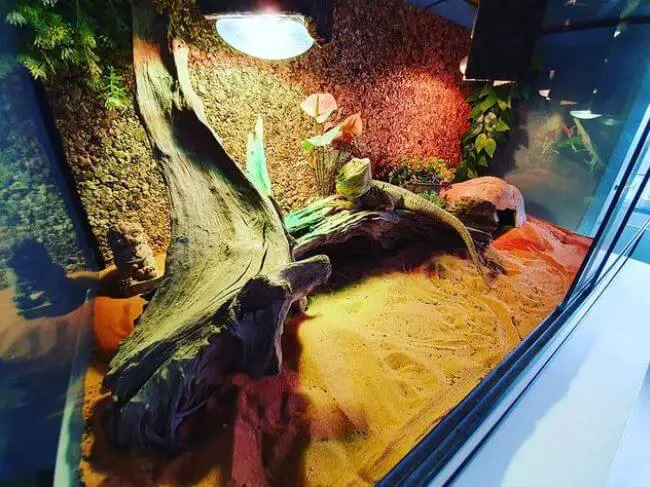

One Response
Bearded dragons are undoubtedly among the most favored pet reptiles, thanks to their friendly manners and likable personalities. These active and curious creatures thrive best in a habitat that accurately replicates their natural environment. A terrarium is an enclosed space that you can manipulate to create a cozy and secure living area for your pet.
Our guide provides an overview of all you need to know about creating the perfect bearded dragon habitat in a terrarium. We’ll explore crucial elements such as size, lighting, temperature, substrate, and decor to aid in ensuring your pet bearded dragon thrives in their new home.
Size
The size of the terrarium is one of the primary aspects of creating a suitable bearded dragon habitat. Bearded dragons can grow quite large, and as such, it’s imperative to provide ample space for them to move around. A terrarium that measures at least 40 gallons (that’s 48 inches long, 18 inches wide, and 20 inches high) is recommended for supervising a single adult bearded dragon.
Lighting
Bearded dragons are diurnal reptiles, which indicates that they are active during the day and rest at night. To replicate their natural environment, ensure that you provide adequate lighting in their terrarium. Full-spectrum lighting is a must-have, as it provides UVB rays and heat that’s necessary for vitamin D3 production and calcium absorption.
Temperature
Bearded dragons thrive in arid regions; hence, you should provide a warm and dry environment in their terrarium. The temperature should be regulated to grant them access to a basking area that’s around 95-110 degrees Fahrenheit during the day. At night, the temperature should be lowered to between 70 and 80 degrees Fahrenheit. You can achieve this range using lighting and heat sources, such as basking bulbs and ceramic heaters.
Substrate
The substrate is the material that covers the terrarium’s bottom. It should be easy to clean, non-toxic, and as close to their natural habitat as achievable. You have several substrate options, such as reptile carpet, paper towels, reptile sand, or coconut coir. Avoid reptile sand, as it could be problematic for bearded dragons, especially if ingested; it could induce impaction.
Decor
The decor in your bearded dragon’s terrarium could include diverse items such as rocks, logs, and foliage, placed strategically to create hiding spots and mimic their natural environment. The decor should also include varying basking spots at different levels of the terrarium, as these lizards are fond of climbing and perching in high places, avoiding any decor likely to be easily swallowed, such as small rocks or gravel.
Humidity
Bearded dragons require a dry habitat, hence keep the humidity level low. The humidity level should be between 30% and 40%. A hygrometer could inexpensively measure the humidity level. Avoid spraying the terrarium with water, and ensure there’s proper ventilation to keep the humidity level low.
Feeding
Bearded dragons are omnivores and require a well-balanced diet of vegetables and insects. Dark leafy greens such as kale and collard greens should comprise the bulk of their vegetable intake, along with smaller portions of squash, sweet potato, and carrots. Insects such as crickets, mealworms should be fed in moderation, dusted with calcium powder before feeding.
Cleaning
Cleaning the terrarium frequently is necessary to prevent the buildup of bacteria and other harmful elements. Ensure that you clean the substrate daily and completely change it every few weeks to prevent the gathering of waste. Wash and disinfect the decor in the terrarium regularly.
Conclusion
Creating the ideal bearded dragon habitat in a terrarium requires attention and a dedicated commitment to providing a secure and comfortable living space for your pet dragon. Ensure that the terrarium is appropriately sized, furnished with decor that replicates their natural habitat, and has proper lighting and temperature. A balanced diet and meticulous cleaning are also essential elements in keeping your bearded dragon healthy and happy. Follow the guidelines in this guide to create the perfect bearded dragon habitat in a terrarium and enjoy a gratifying, soul-nourishing experience with your pet.